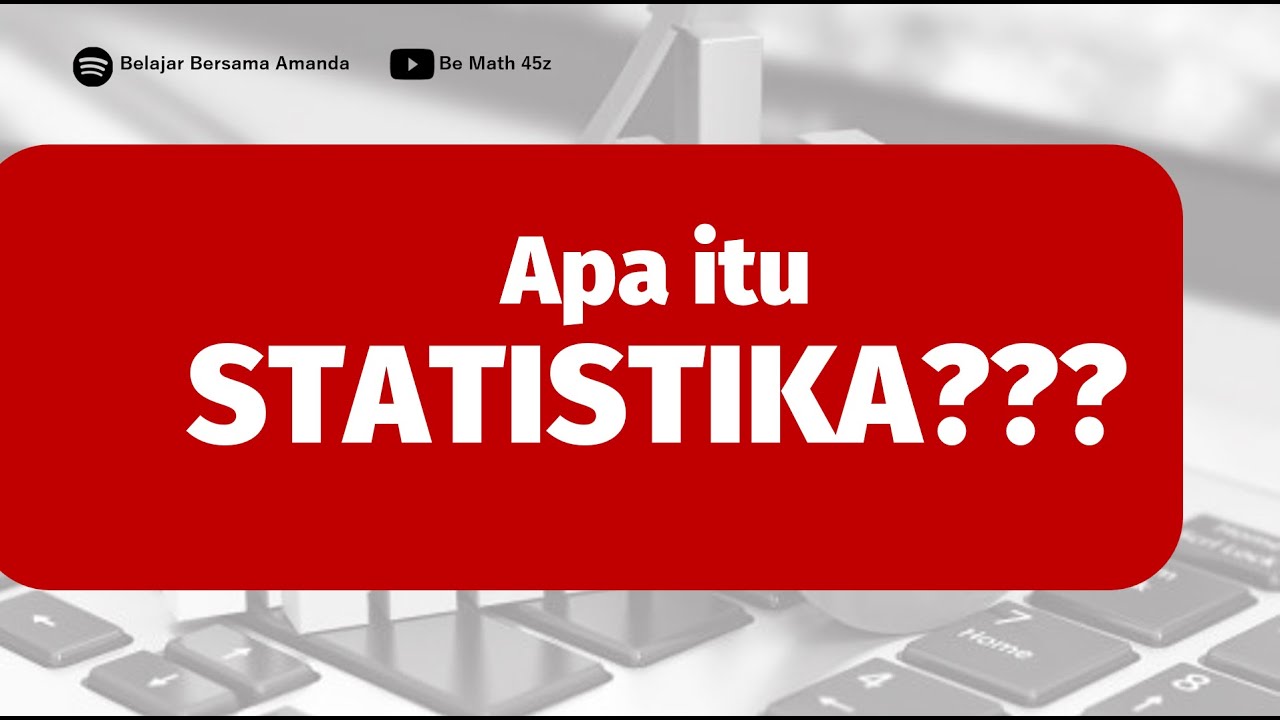Statistics for Social Work Lecture 01
Summary
TLDRThis lecture introduces essential statistical concepts for social work, defining data as information from various sources and statistics as the science of data analysis for decision-making. It distinguishes between numerical and categorical data, explains the concepts of population and sample, and introduces parameters and statistics. The lecture also covers the branches of descriptive and inferential statistics, and outlines the levels of measurement with the NOIR acronym, emphasizing the importance of understanding these levels to avoid misinterpretation in statistical analysis.
Takeaways
- 📊 Data is defined as information derived from observations, counts, measurements, or responses.
- 📈 Statistics is the science of collecting, organizing, analyzing, and interpreting data to inform decision-making.
- 🔢 Data can be categorized as numerical (quantitative) or categorical (qualitative).
- 🌐 Population refers to the complete set of outcomes or responses relevant to a study.
- 🔍 A sample is a subset of the population used for analysis.
- 📐 Parameters are numerical descriptions of population characteristics.
- 📊 Statistics (or sample statistics) are numerical characteristics derived from samples.
- 📚 Descriptive statistics focus on the collection, organization, presentation, and analysis of data.
- 🔮 Inferential statistics use sample data to make inferences about the population.
- 🔑 There are four levels of measurement: Nominal, Ordinal, Interval, and Ratio (remembered by the acronym NOIR).
- 🎓 Understanding levels of measurement is crucial for accurate statistical analysis and interpretation.
Q & A
What is the definition of data according to the script?
-Data is defined as information coming from observations, counts, measurements, or responses.
What is the role of statistics in decision-making?
-Statistics is the science of collecting, organizing, analyzing, and interpreting data in order to make decisions.
How does the script differentiate between numerical and categorical data?
-Numerical data represents quantities and can be measured numerically, while categorical data is synonymous with qualitative data and represents categories or groups.
What is the difference between a population and a sample in statistics?
-A population in statistics is the collection of all outcomes, responses, measurements, or accounts of interest in a given study, whereas a sample is a subset of the population.
What is a parameter in the context of statistics?
-A parameter is a numerical description of a population characteristic, used for computations to describe the population.
How is a statistic different from a parameter?
-A statistic is a numerical characteristic of a sample, computed from the sample data, whereas a parameter describes the entire population.
What are the two main branches of statistics mentioned in the script?
-The two main branches of statistics mentioned are descriptive statistics and inferential statistics.
What is the focus of descriptive statistics?
-Descriptive statistics focus on the collection, organization, presentation, and analysis of data.
What is the purpose of inferential statistics?
-Inferential statistics involve using sample data to draw conclusions about a population.
What are the two types of data introduced in the script?
-The two types of data are qualitative data, which is synonymous with categorical data, and quantitative data, which is numerical.
Can you explain the acronym NOIR related to levels of measurement in statistics?
-NOIR stands for Nominal (N), Ordinal (O), Interval (I), and Ratio (R), which are the different levels of measurement in statistics.
What does nominal data represent in statistics?
-Nominal data represents categories that can be grouped, such as gender or civil status, without any inherent order.
How does ordinal data differ from nominal data?
-Ordinal data, like nominal data, can be categorized, but it also has a rank or order in the categories, such as first, second, third, or military rank.
What is the key characteristic of interval data in statistics?
-Interval data has no true zero point, meaning that a zero value does not necessarily indicate the absence of the measured attribute, such as temperature in Celsius.
What is the significance of a true zero point in ratio data?
-In ratio data, a true zero point indicates an absolute absence of the measured attribute, such as height, weight, or volume, where zero means nothing at all.
Outlines

Esta sección está disponible solo para usuarios con suscripción. Por favor, mejora tu plan para acceder a esta parte.
Mejorar ahoraMindmap

Esta sección está disponible solo para usuarios con suscripción. Por favor, mejora tu plan para acceder a esta parte.
Mejorar ahoraKeywords

Esta sección está disponible solo para usuarios con suscripción. Por favor, mejora tu plan para acceder a esta parte.
Mejorar ahoraHighlights

Esta sección está disponible solo para usuarios con suscripción. Por favor, mejora tu plan para acceder a esta parte.
Mejorar ahoraTranscripts

Esta sección está disponible solo para usuarios con suscripción. Por favor, mejora tu plan para acceder a esta parte.
Mejorar ahora5.0 / 5 (0 votes)






